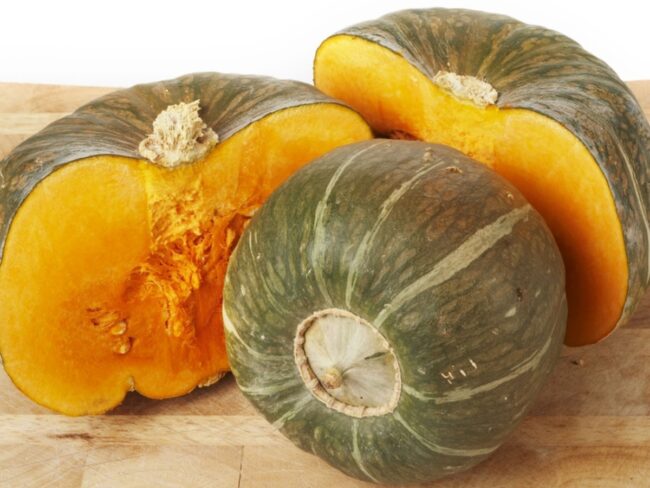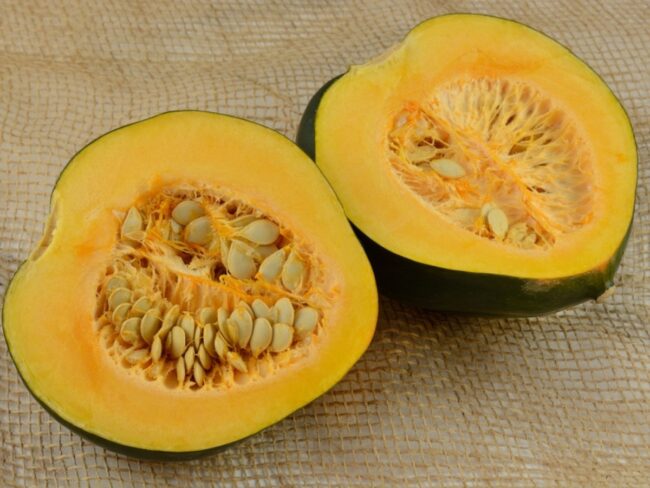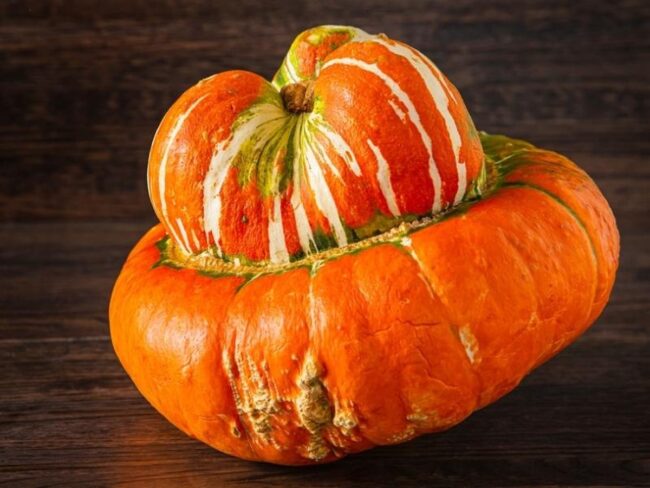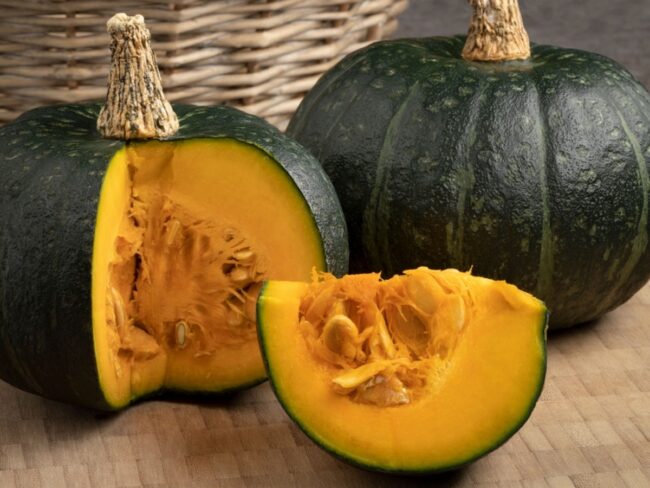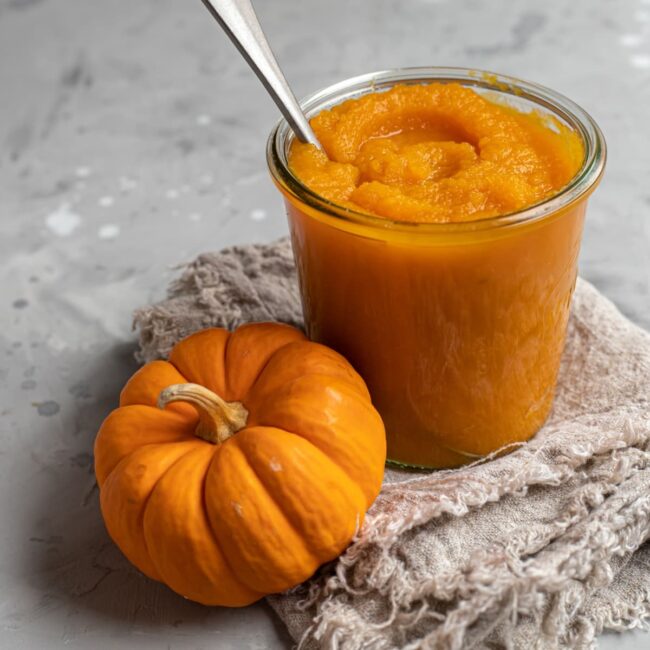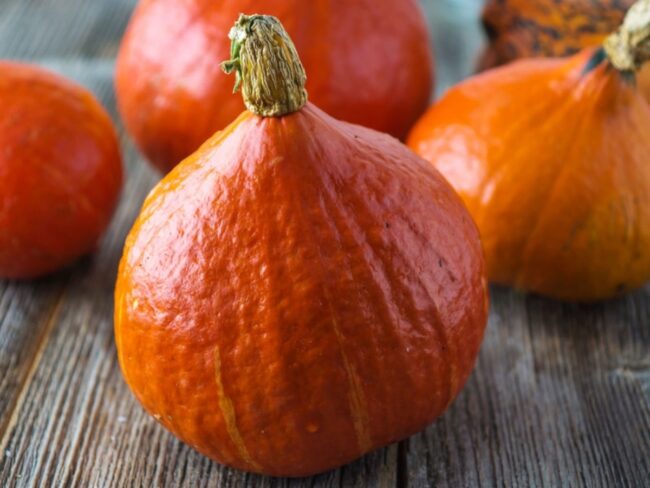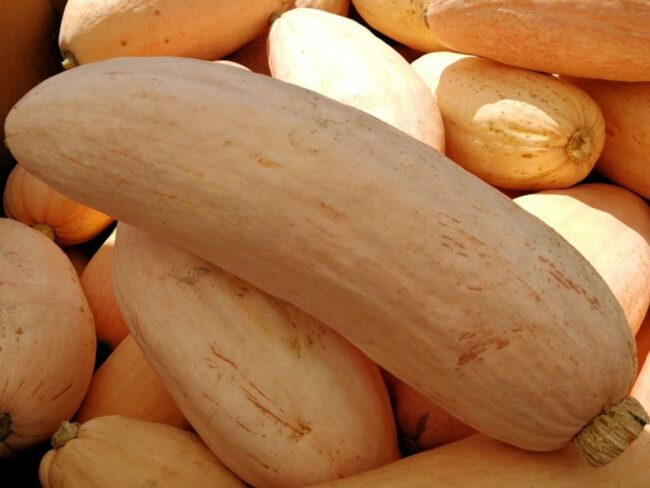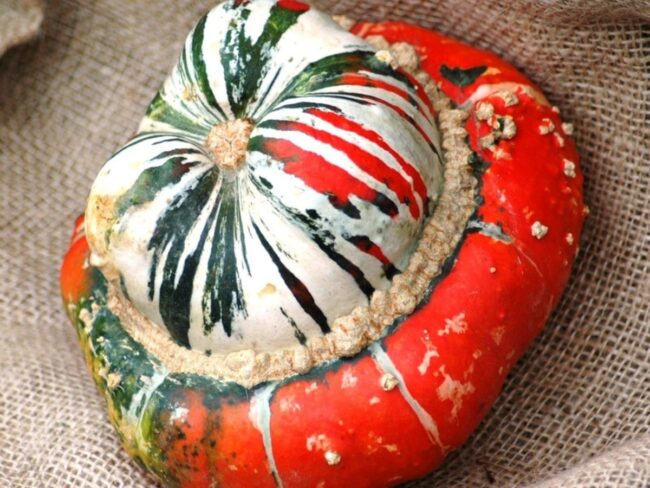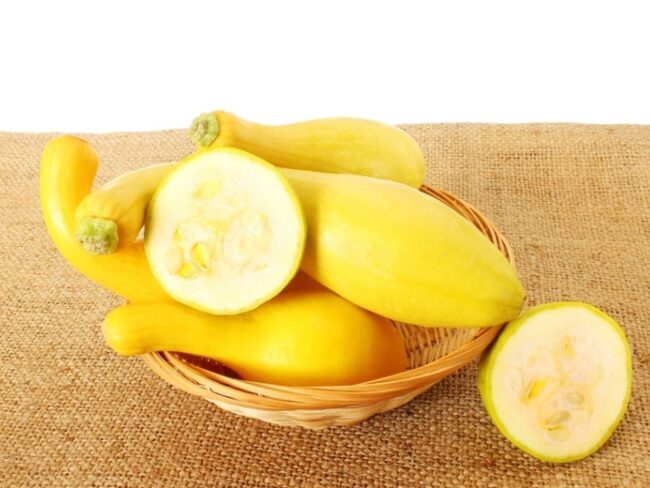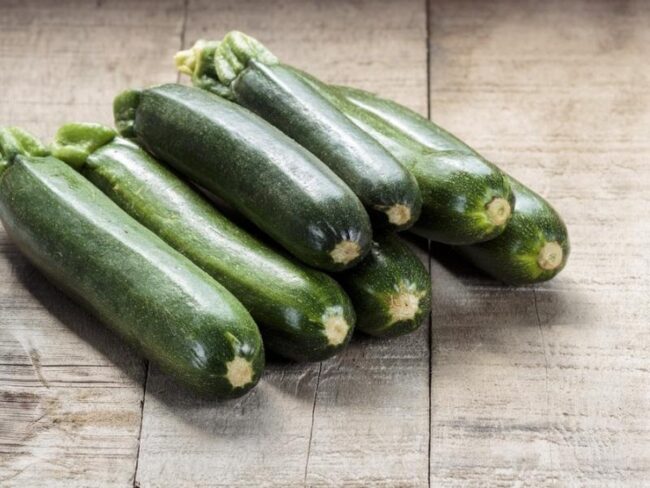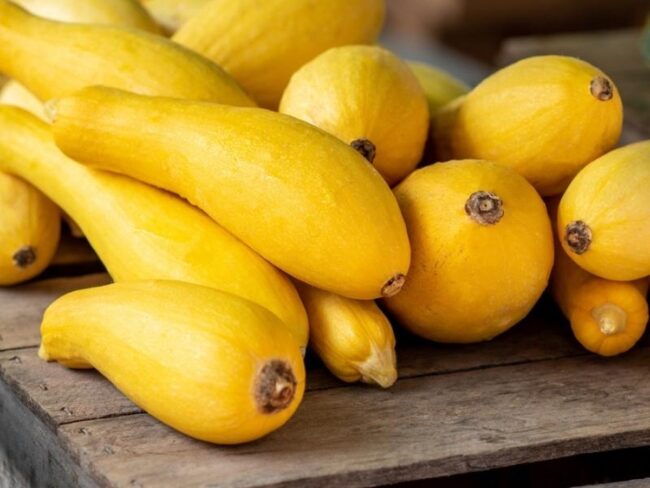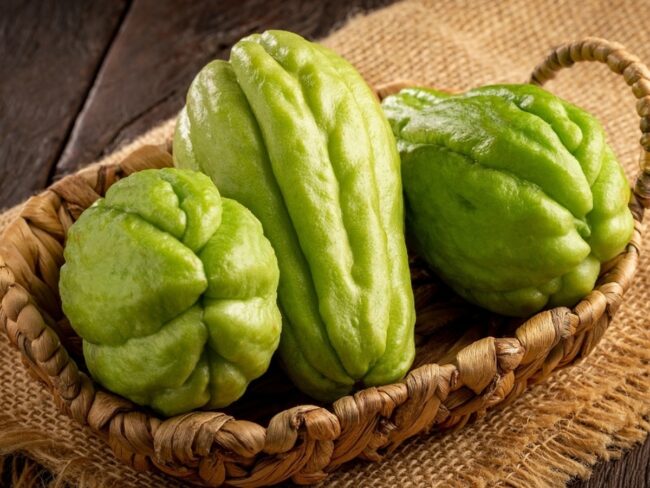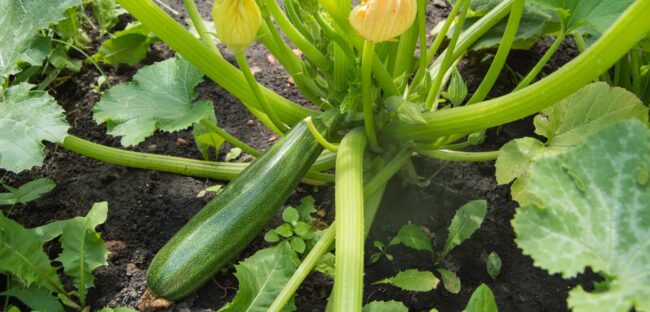23 Interesting Types of Squash You Should Know
Looking at different kinds of squash shows a wide range of flavors and textures that can improve your seasonal meals.
From sweet to earthy, each type adds something special to your recipes.
Knowing these different types helps you choose the perfect squash for your cooking needs.
Using this knowledge makes sure your dishes are healthy, tasty, and just right for your tastes.
Types of Winter Squash
These cold-season gourds showcase varied colors, tastes, and textures. Some feature silky flesh, while others remain firmer and gently sweet. Here are 14 winter squash types with details.
Buttercup squash
Buttercup squash, with its distinctive cup-like shape, features green skin and sweet orange flesh.
It serves well as a tasty side dish when sliced and roasted.
Pureeing the creamy interior makes for a delicious soup that can be enhanced with parmesan cheese on top.
This squash is often mistaken for butternut squash due to its similar color but offers a unique flavor profile all its own.
Versatile in the kitchen, buttercup squash can be used in various recipes to add depth and sweetness to meals.
Its appealing texture and taste make it a favorite among many cooks looking for something special.
Acorn squash
Acorn squash holds a significant place in American agriculture, being one of the earliest varieties grown in the country.
Weighing between one and three pounds, this squash has a manageable size for various culinary uses.
Its shape resembles that of an acorn, which is reflected in its name.
The skin showcases a beautiful blend of deep green and yellow hues, making it visually appealing on any table.
This unique appearance adds charm to fall meals or seasonal decorations.
Rich history combined with distinctive features makes acorn squash a noteworthy addition to American cuisine.
Honeynut squash
Much smaller than its butternut cousin, this squash presents a delightful twist on familiar flavors.
It comes from butternut squash seeds, making it a newer variety.
A richer and sweeter taste sets it apart, offering a concentrated burst of flavor that enhances any dish.
Its unique size and profile invite creative cooking adventures in the kitchen.
This little gem adds excitement to meals with its vibrant taste and versatility.
Enjoy discovering all the ways to incorporate this special squash into your culinary creations!
Sweet dumpling squash
Sweet dumpling squash shines with its yellow, white, and green skin, making it a favorite for home décor.
Weighing less than one pound keeps this variety smaller than many winter squashes.
Its mild and sweet flavor makes it enjoyable to eat in various dishes.
This versatile squash can easily enhance both savory meals and delightful desserts.
Adding sweet dumpling squash to your kitchen brings color along with taste that many people appreciate.
Kabocha
Kabocha squash, often called Japanese pumpkin, features a rich green skin.
This small squash delivers a taste that resembles both acorn and butternut squashes.
Its buttery flavor sets it apart from other winter varieties.
Notably, the skin is edible and adds to its appeal.
Many enjoy this versatile ingredient in various dishes or simply roasted for a delicious side dish.
A wonderful choice for adding depth to meals, kabocha enhances both flavor and nutrition effortlessly.
Delicata squash
Delicata squash features a unique cylinder shape adorned with thin green stripes.
This variety stands out among winter squashes because peeling isn’t necessary before cooking.
Low maintenance and easy to prepare, it shines in roasted dishes.
Its rich flavor complements various recipes, making it a popular choice during the colder months.
Enjoying this versatile vegetable adds a delightful twist to any meal.
A touch of creativity can transform simple ingredients into something memorable with delicata squash at the center of your culinary creations.
Hubbard
Opening a Hubbard squash can be tough due to its hard skin.
Once cut open, the sweet flavor shines through, making it an excellent choice for creamy soups.
Its tender flesh works wonderfully when mashed or pureed.
These squashes can grow impressively large, reaching weights of up to 15 pounds.
The unique taste and texture elevate any dish they are added to, providing a rich and satisfying experience in meals.
Cooking with this squash might require effort upfront but yields delicious results that many appreciate.
Carnival squash
Carnival squash stands out with its unique colors and patterns, making it easily recognizable among various squash types.
Often, this variety graces tabletops as a charming centerpiece during the fall season.
Beyond their visual appeal, these squashes offer a rich, buttery sweetness that enhances many dishes.
Roasting them brings out their delightful flavor while turning them into a warming soup creates comfort in every spoonful.
Their versatility ensures they can shine in both décor and dining experiences alike.
A perfect blend of beauty and taste makes carnival squash truly special.
Pumpkin
Surprisingly, many people don’t realize that their beloved fall decoration is actually a type of squash.
Edible and inedible pumpkins exist, so checking the label before buying is wise.
Cinderella pumpkins and Sugar Pie pumpkins are two delicious varieties often enjoyed in seasonal recipes.
These vibrant fruits not only enhance autumn decorations but also add flavor to various dishes.
Understanding the difference between types ensures a tasty treat rather than just a pretty display.
This knowledge can elevate both your cooking and decorating for the season ahead.
Red Kuri
Red Kuri, a notable member of the Hubbard squash family, features a round shape similar to an onion.
Its vibrant orange-red skin catches the eye and adds color to any dish.
This medium-sized squash works wonderfully in soups or casseroles, bringing a rich flavor that enhances meals.
Roasting or grilling Red Kuri also highlights its natural sweetness and creates delicious side dishes.
Versatile in cooking methods, this squash satisfies various taste preferences while being easy to prepare.
Chefs appreciate how this unique produce elevates both casual dinners and special occasions alike.
Spaghetti squash
Finding spaghetti squash in supermarkets is easy, as it’s available throughout the year.
This versatile vegetable shines during autumn when it’s in season.
Roasting the squash with its cut side facing down helps achieve a tender texture.
Once cooked, scraping out the insides reveals strands that resemble noodles, making it a popular pasta substitute.
Enjoying spaghetti squash with your favorite sauce offers a delightful twist on traditional dishes.
Many people appreciate this unique way to enjoy meals while adding more vegetables to their plates.
Butternut squash
Deep, bright orange flesh makes butternut squash visually appealing and nutritious.
This winter squash variety features a unique orange skin that adds to its charm.
Available year-round, it shines particularly during the fall and winter months when it's at its freshest.
Known for its popularity, butternut squash is versatile in cooking, lending itself to various dishes from soups to roasted sides.
The seasonal peak occurs in autumn and winter when flavors are at their best.
Finding this delightful ingredient can enhance any meal throughout the year.
Banana squash
Light orange-pink in color, banana squash captures attention with its cylindrical shape.
This distinctive variety can grow impressively long, reaching lengths of up to three feet.
Although available throughout the year, the best time to enjoy banana squash is during fall and winter when it’s in season.
Its unique appearance and size make it an interesting addition to any kitchen or garden setting.
Turban squash
Turban squash, closely related to buttercup, kabocha, and Hubbard varieties, can reach a weight of six pounds.
Its shape is quite unusual; it resembles a pumpkin topped with a small pumpkin or wearing a whimsical hat.
This squash has a gentle flavor that sets it apart from other winter squashes.
Whether for cooking or decoration, its distinctive look adds an interesting touch to any dish or display.
With its appealing form and subtle taste, turban squash stands out in the world of vegetables.
Types of Summer Squash
These cold-season gourds showcase varied colors, tastes, and textures. Some have silky flesh, while others remain firmer and gently sweet. Check out these 9 summer squash varieties.
Round Zucchini
Round zucchini, often whimsically named eight ball zucchini, shares similarities with the common variety.
Its flavor is quite comparable to traditional zucchini.
This unique squash shines when used for stuffing.
Filling it with a mix of vegetables and cheese creates an impressive vegetarian main dish.
The round shape adds a fun twist to any meal, making it visually appealing on the plate.
Cooking with this squash offers both taste and creativity in the kitchen.
Squash Blossoms
Squash blossoms, which bloom in shades of yellow or orange, add a delightful twist to meals.
These blooms come from squash plants and offer culinary potential that many overlook.
When breaded and fried, they turn into a tasty treat that surprises the palate.
Though not vegetables themselves, their unique flavor deserves attention in cooking adventures.
Discovering new ways to enjoy them can make any dish more exciting and memorable.
Their vibrant appearance brings beauty to plates as well as flavor to bites.
Zephyr
Zephyr squash stands out for its stunning appearance and delicious taste.
This variety features a striking green and yellow exterior with a cylindrical shape.
Developed from delicata, yellow crookneck, and yellow acorn squashes, it showcases a unique blend of qualities.
Nutty sweetness defines its flavor profile, making it an appealing choice for various dishes.
Its vibrant colors make any meal more inviting while adding nutritional value to the plate.
Enjoying this squash brings both beauty and flavor to the table.
Crookneck squash
Yellow crookneck squash stands out with its unique curved shape and tapered end.
Often mistaken for yellow summer squash, it has a distinct identity and delivers a mild flavor.
This versatile vegetable shines in stir-fry dishes and soups, enhancing meals with its delightful taste.
Typically bright yellow, it adds color to any plate while offering nutritional benefits.
Recognized as one of the most popular summer squashes, this variety is loved by many for its culinary flexibility.
Choosing fresh crookneck squash can elevate your cooking experience in delicious ways.
Zucchini
Summer brings out the best flavor in zucchini green squash, making it a favorite during this season.
Growing zucchini at home is quite simple; just a few plants can yield an abundant harvest.
This versatile vegetable shines when sautéed, roasted, or enjoyed raw in salads.
Steaming it with yellow squash creates a tasty side dish that complements many meals.
A sprinkle of parmesan cheese enhances its taste beautifully and adds richness to any preparation.
Enjoying fresh zucchini throughout the year adds variety and nutrition to your diet.
Patty Pan Squash
Recognizable for its unique shape, pattypan squash resembles a tiny spaceship.
This vegetable comes in two colors: bright yellow and deep green, adding visual appeal to any meal.
Oval-shaped and flat with small spikes along the edges, it stands out in gardens and markets alike.
Cooking options are versatile; frying brings out its flavor while steaming pairs it perfectly with other summer squashes for a nutritious side dish.
Many recipes highlight this summer favorite, showcasing its adaptability in various cuisines.
A delightful addition to any plate, pattypan squash offers both taste and charm.
Chayote (mirliton)
Chayote squash features a bumpy green skin with ridges, giving it a distinctive appearance.
Many shoppers often mistake this unique vegetable for various types of peppers due to its similar shape.
In some places, chayote squash is known as the vegetable pear, highlighting its unusual characteristics.
Recognizing this squash can add an interesting twist to meals and provide new flavors for culinary adventures.
Exploring recipes that include chayote can introduce delightful textures and tastes into everyday cooking.
This versatile ingredient deserves attention in any kitchen setting.
Cousa
Cousa resembles round zucchini, which often leads to confusion.
This squash features a lighter color compared to dark green zucchini.
A sweet and mild flavor makes it an appealing choice for many dishes.
Thin skin allows for easy cutting or peeling, enhancing its versatility in cooking.
Recipes designed for other types of squash work well with cousa too, making meal preparation straightforward and enjoyable.
Yellow Squash
The term "squash" often brings to mind the simple yellow squash, specifically the straight-neck variety.
This type has a wider base and narrows toward the top, offering a subtle curve compared to its crookneck cousin.
Fried yellow squash ranks among favorite side dishes in Southern cuisine.
For this dish, slicing the squash into pieces about a quarter-inch thick works best for frying.
Cooking them until golden brown on both sides enhances their flavor and texture.
Dredging in flour or using batter adds an extra layer of taste that many enjoy.
How to Store and Select Squash
Selecting squash at the grocery store can be an art.
Focus on finding a heavy squash, as this usually indicates freshness and quality.
Avoid those oversized zucchinis; they might end up tougher than you’d like.
Look for firmness without any bruises or soft spots, which signal that the squash is no longer at its best.
Storing winter squash in a cool and dry spot allows it to last for months, while summer varieties require refrigeration and should be enjoyed within a week for optimal taste.
Different Ways to Cook Squash
Squash offers endless culinary creativity, and its versatility shines in countless recipes.
Roasting brings out its natural sweetness, while sautéing can enhance flavors with just a hint of garlic or herbs.
Fried yellow squash is a classic dish that pairs wonderfully with crispy fried chicken for those comforting family meals.
Creamy soups made from pureed squash provide a rich texture that warms the soul on chilly days.
Summer squash can add crunch to fresh salads, giving each bite an invigorating twist; winter varieties shine when cooked to reveal their hearty essence.
Squash’s Nutritional Health Benefits
Summer squash, such as zucchini and yellow squash, offers a treasure trove of antioxidants while being low in carbohydrates.
Winter squash like acorn and Hubbard varieties presents its own set of advantages with a rich fiber content that supports digestion.
This type of squash is not only packed with vitamins C and A but also boasts anti-inflammatory properties that can enhance overall health.
Both summer and winter varieties serve as versatile ingredients in various dishes, adding nutrition without heaviness.
Whether grilled, roasted, or pureed into soups, these squashes make every meal feel lighter yet satisfying.

